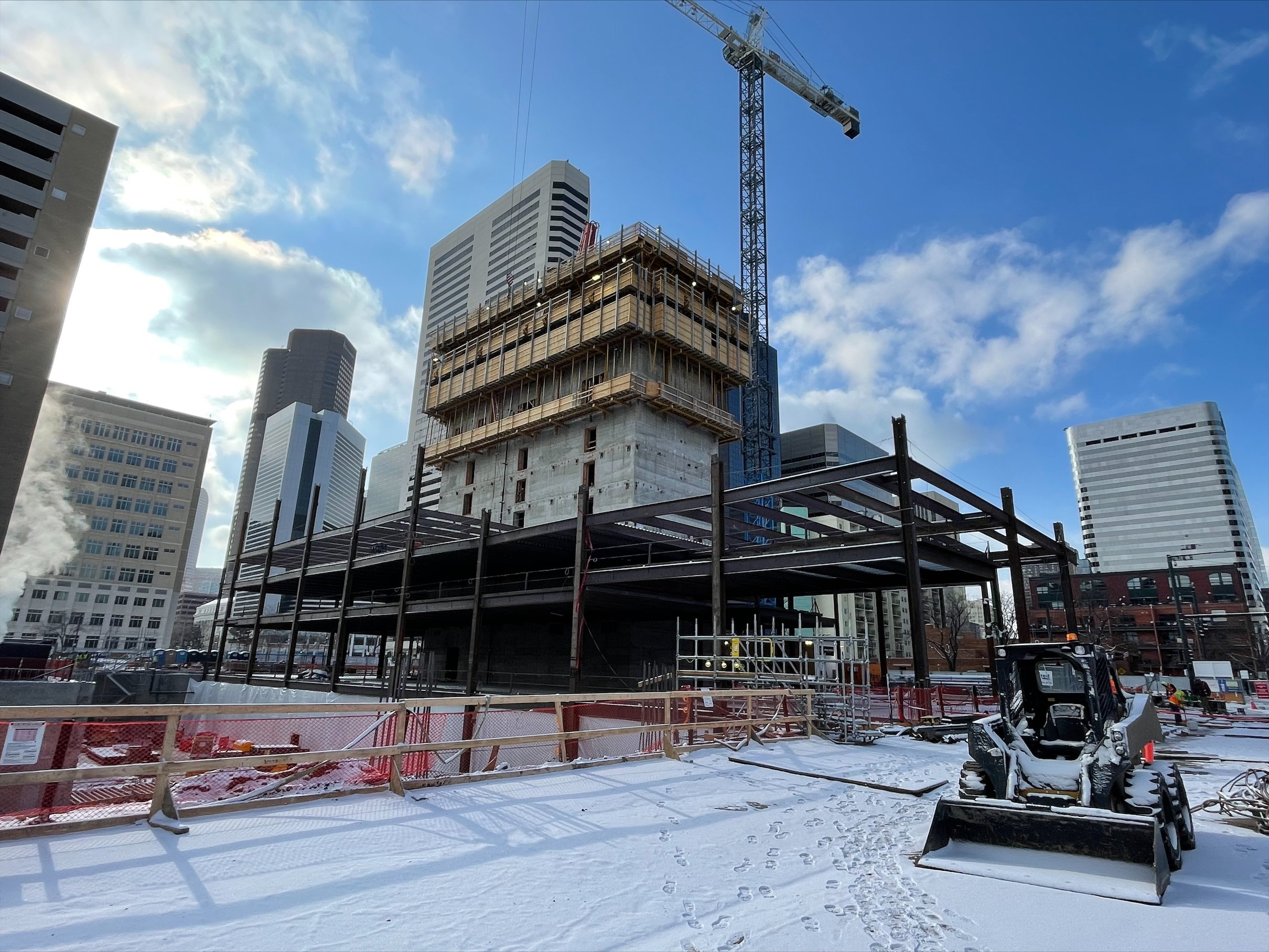In the News - Colorado Real Estate Journal
Team Sport - In architecture, the edge of innovation is always only a day away…
By: Sean O’Keefe
Design is a continuum, a lineage of shared knowledge passed mouth to ear, hand to action over millennia. Indeed, the arch in architecture attributed to the Roman Empire for the proliferation of the technique appears in Mesopotamia 1,200 years earlier. In Denver, design doesn’t stretch back quite that far. Having been established in 1859, Denver was little more than a supply line outpost until the first train station was built in 1881. That structure was gutted by a fire in 1894, and only portions of the original wing buildings were reincorporated into what stands today. In 1904, three-term mayor and city builder Robert W. Speer announced a series of civic improvements based on the City Beautiful ideas shown to him at the 1893 World Columbian Exposition in Chicago. Among the lasting results are the Denver Museum of Nature and Science (1908), City Auditorium (1908) and Civic Center Park (1919).
In the generations of design since, Denver has had the privilege of being home to signature pieces from many of modern architecture’s most renowned designers – those of structures big and small. Among the many architectural masterpieces dotting the streets of Denver, those in the know are keen to enjoy the Daniels & Fisher Tower (1910), designed by Fredrick Sterner; the “Cash Register Building” (1983), a collaboration between Phillip Johnson and I.M. Pei; or the Michael Graves addition (1995) to the Denver Central Library, designed by Fisher/ Hoyt 40 years earlier. The Denver Art Museum now combines three generations of design brilliance in a single site – the Martin Building (formerly North), designed by Geo Ponti and James Sudler Associates (1971); the Hamilton Building, designed by Daniel Libeskind and Davis Partnership Architects (2006); and the new Sie Welcome Center, designed by Fentress Architects and Machado Silvetti (2021). Among the many, my favorite is the diminutive and brilliant Clyfford Still Museum, designed by Allied Works (2011).
On the horizon – 1900 Lawrence. This gleaming, trophy-class office tower will max out at 400 feet and promises to deliver 720,000 square feet of high-flex, high-tech office space that aims to contribute to Denver’s design lineage in the second quarter of 2024.
“Winston Churchill once said, ‘We shape our buildings and afterward they shape us,’ and I really believe in that,” says Chris Payne, senior vice president of Riverside Investment & Development, the firm responsible for bringing 900 Lawrence to market.
Read More click here.

